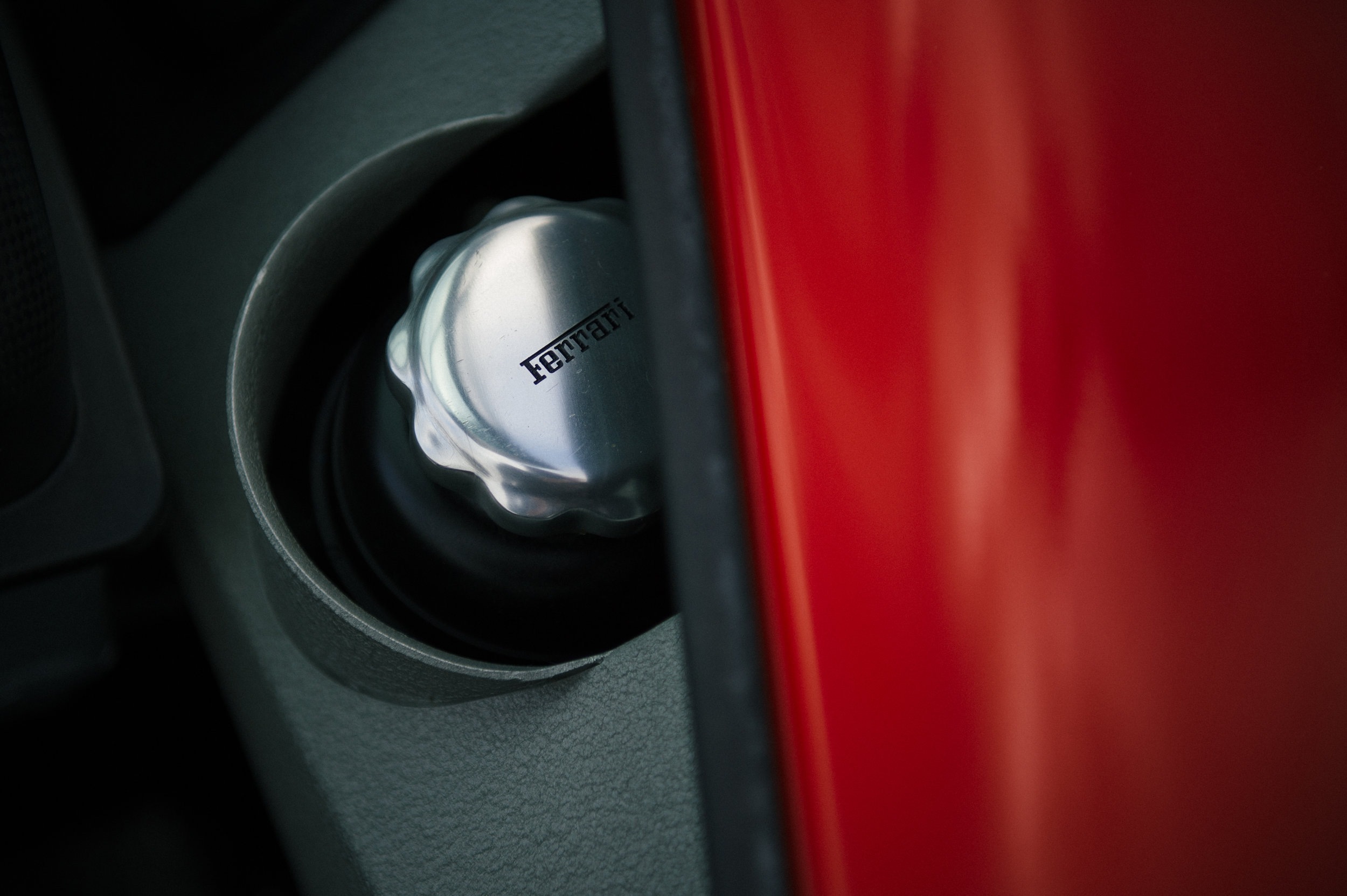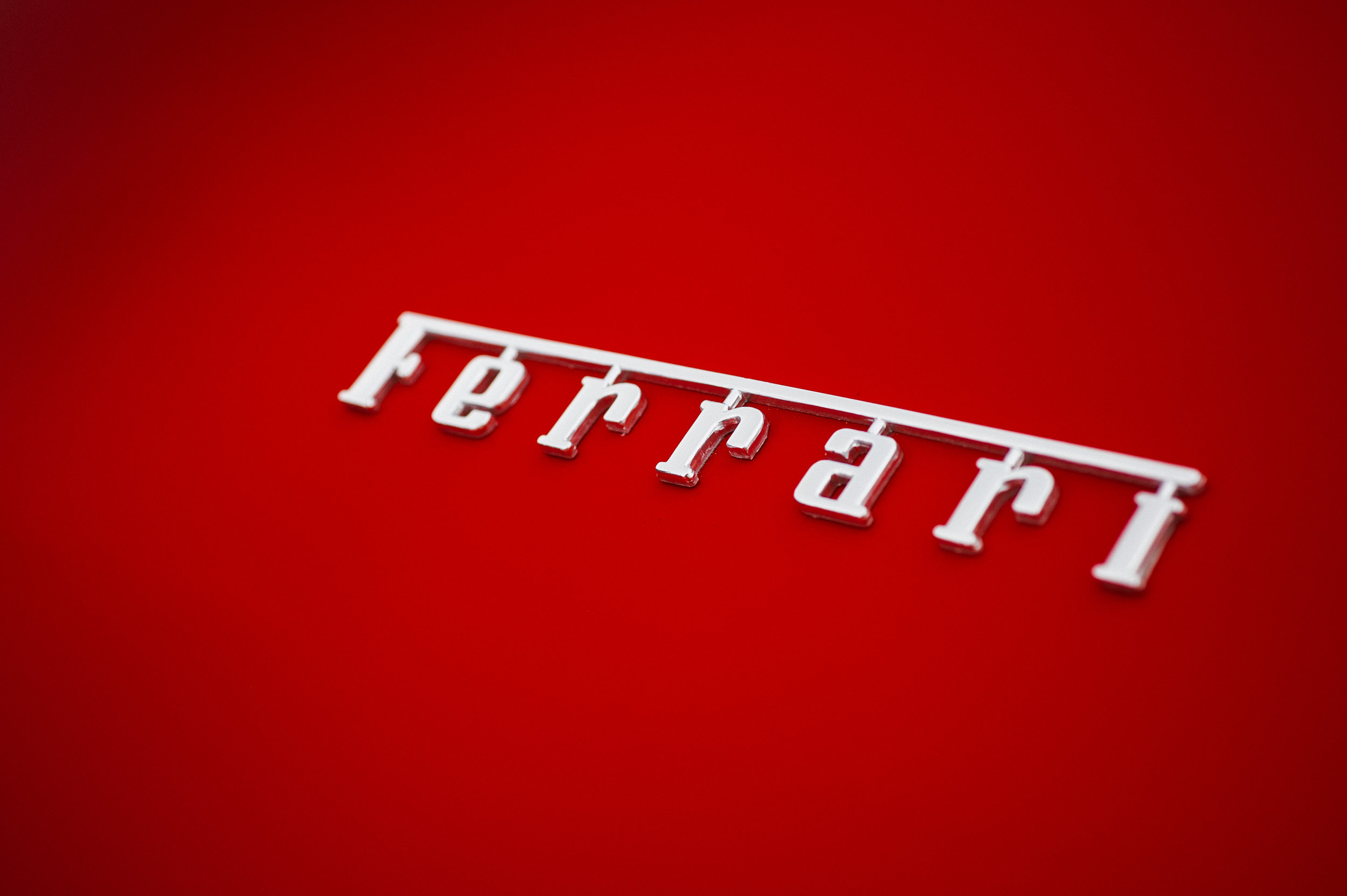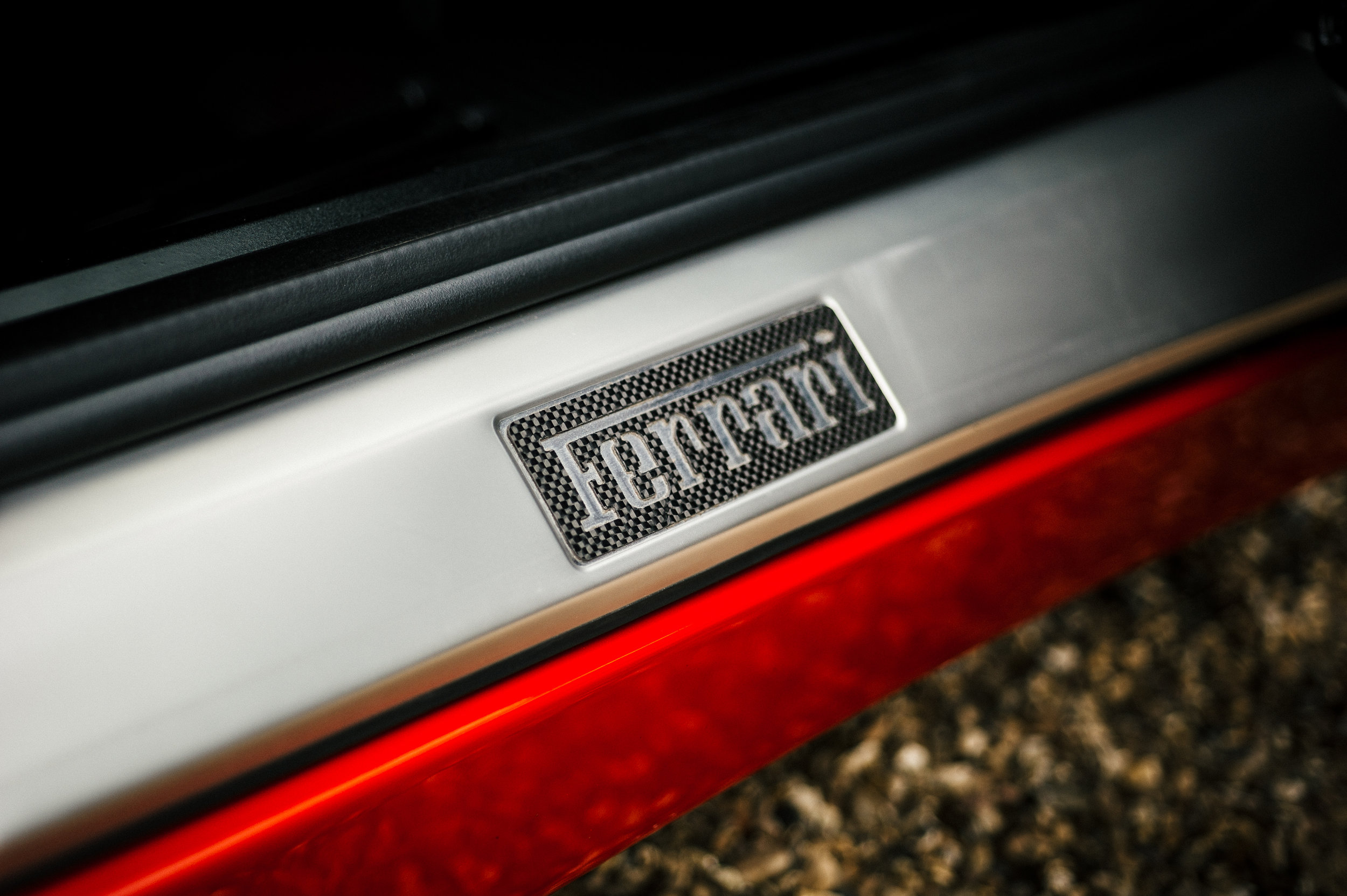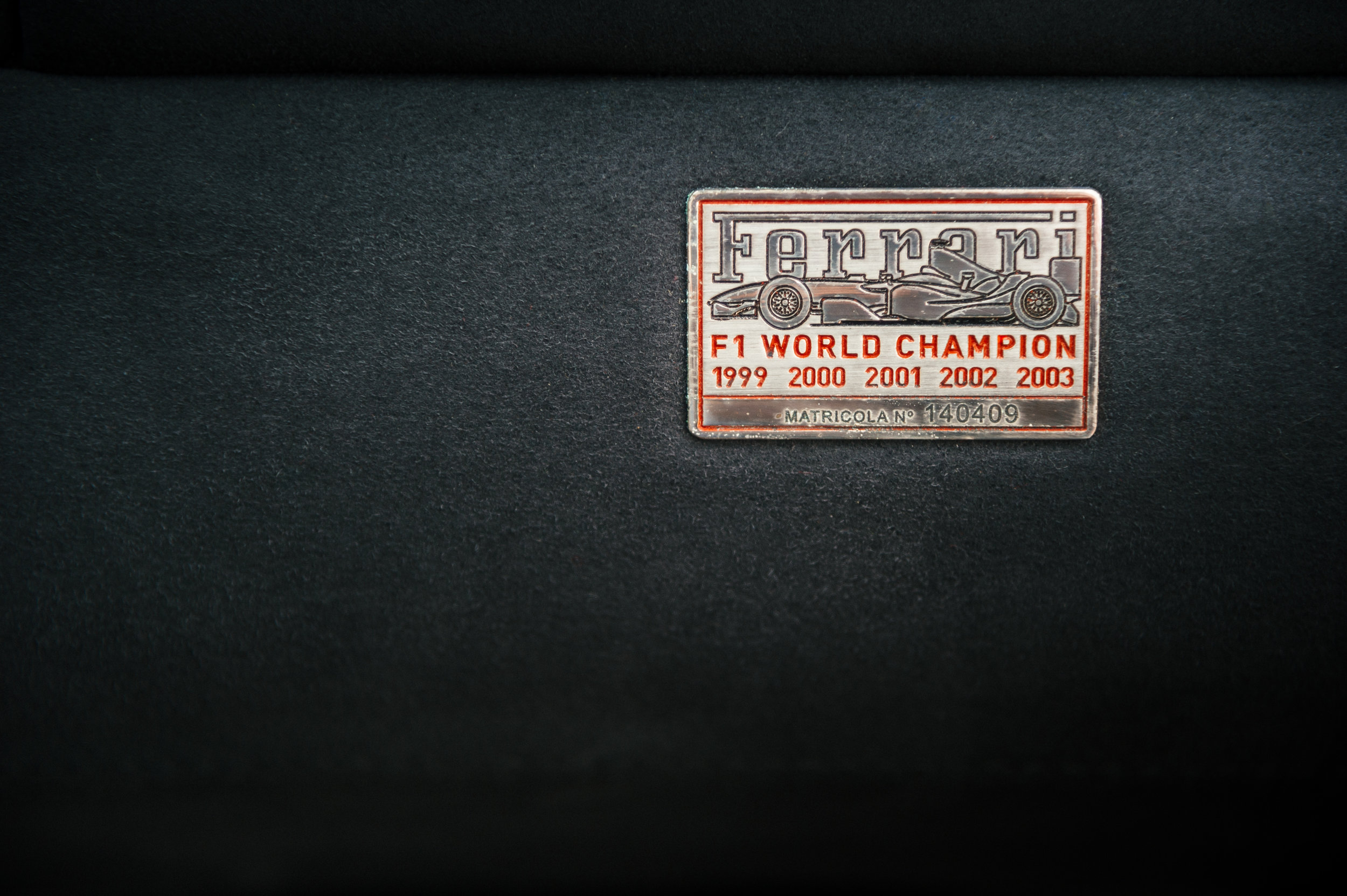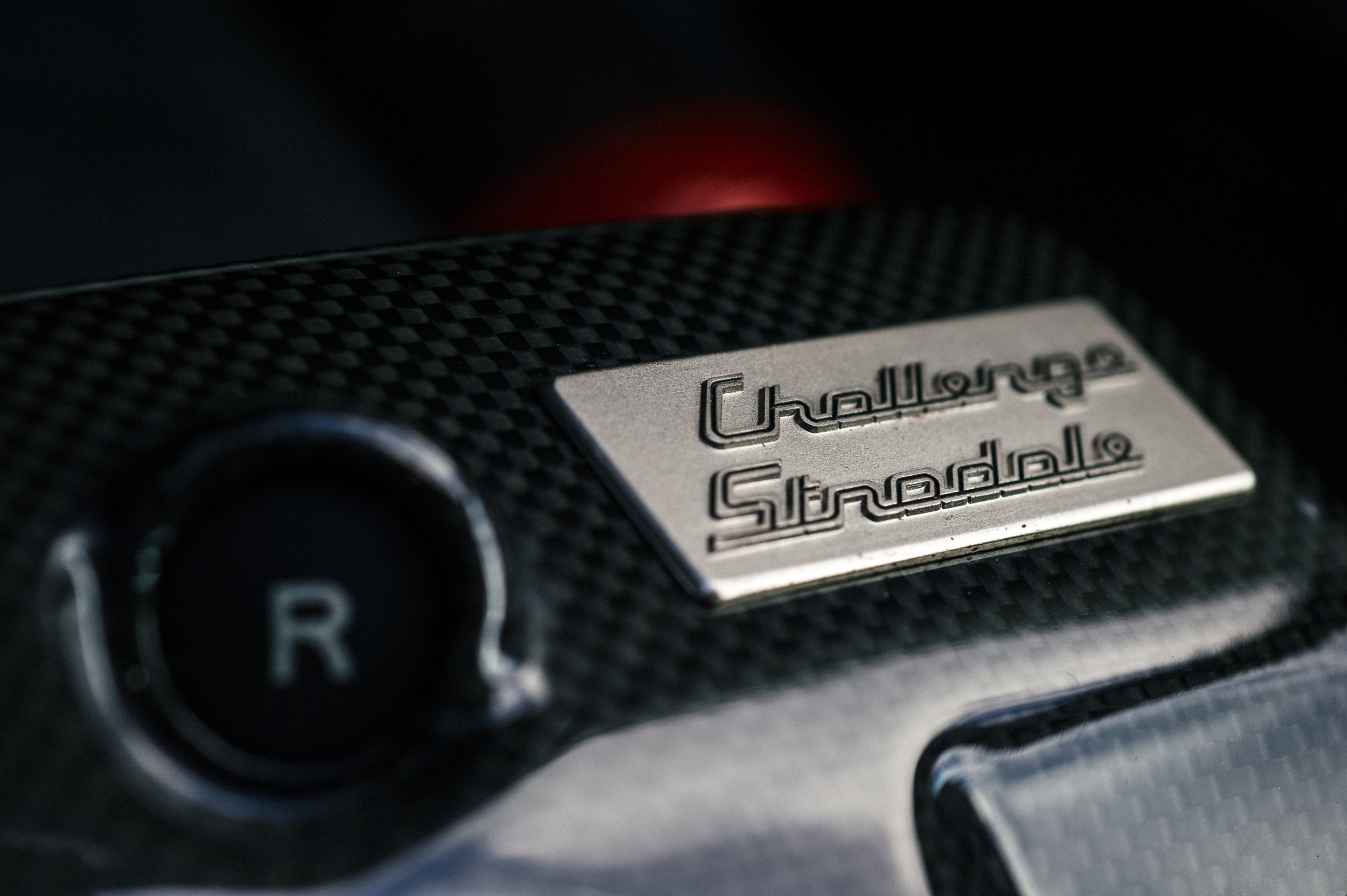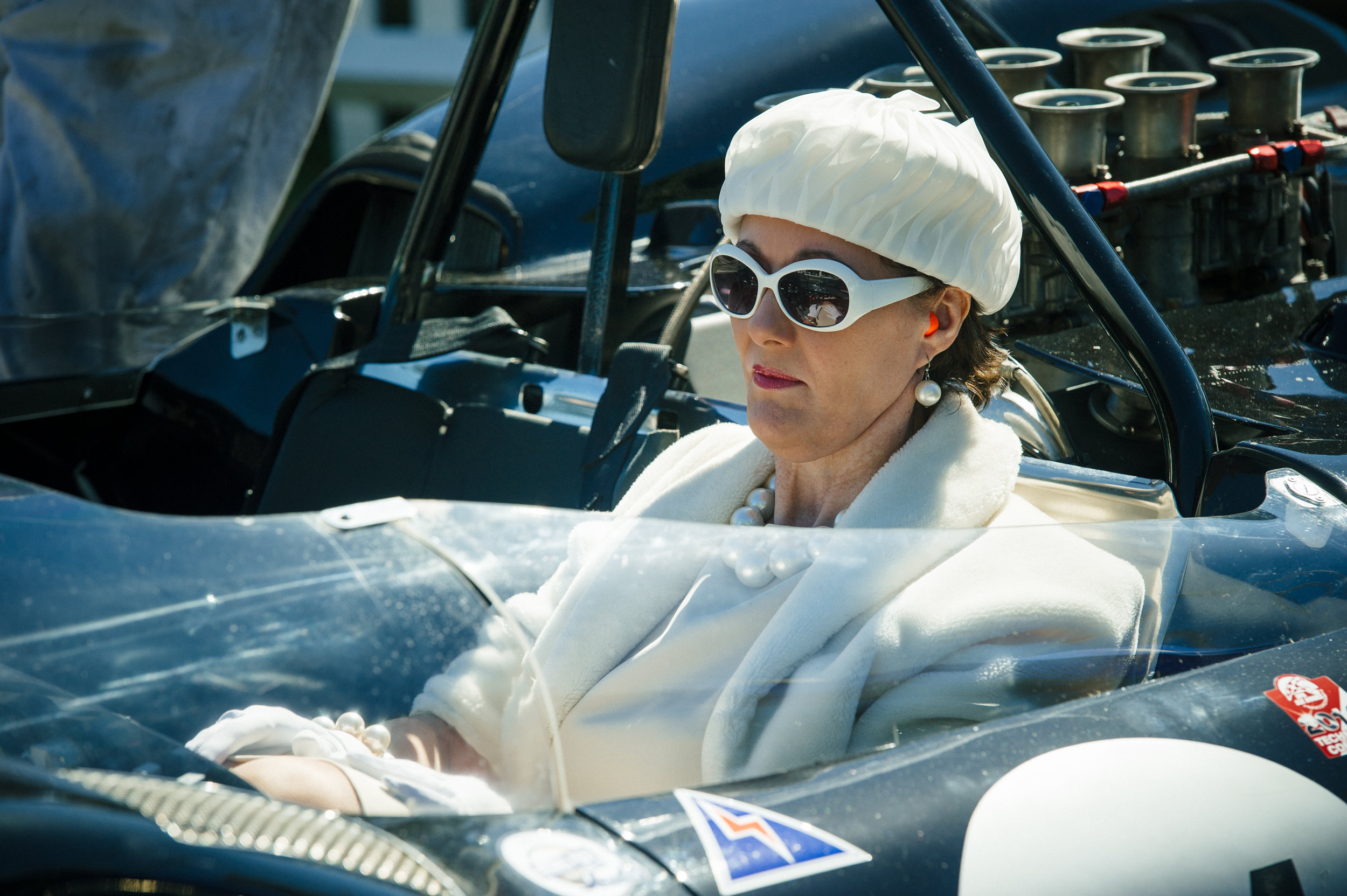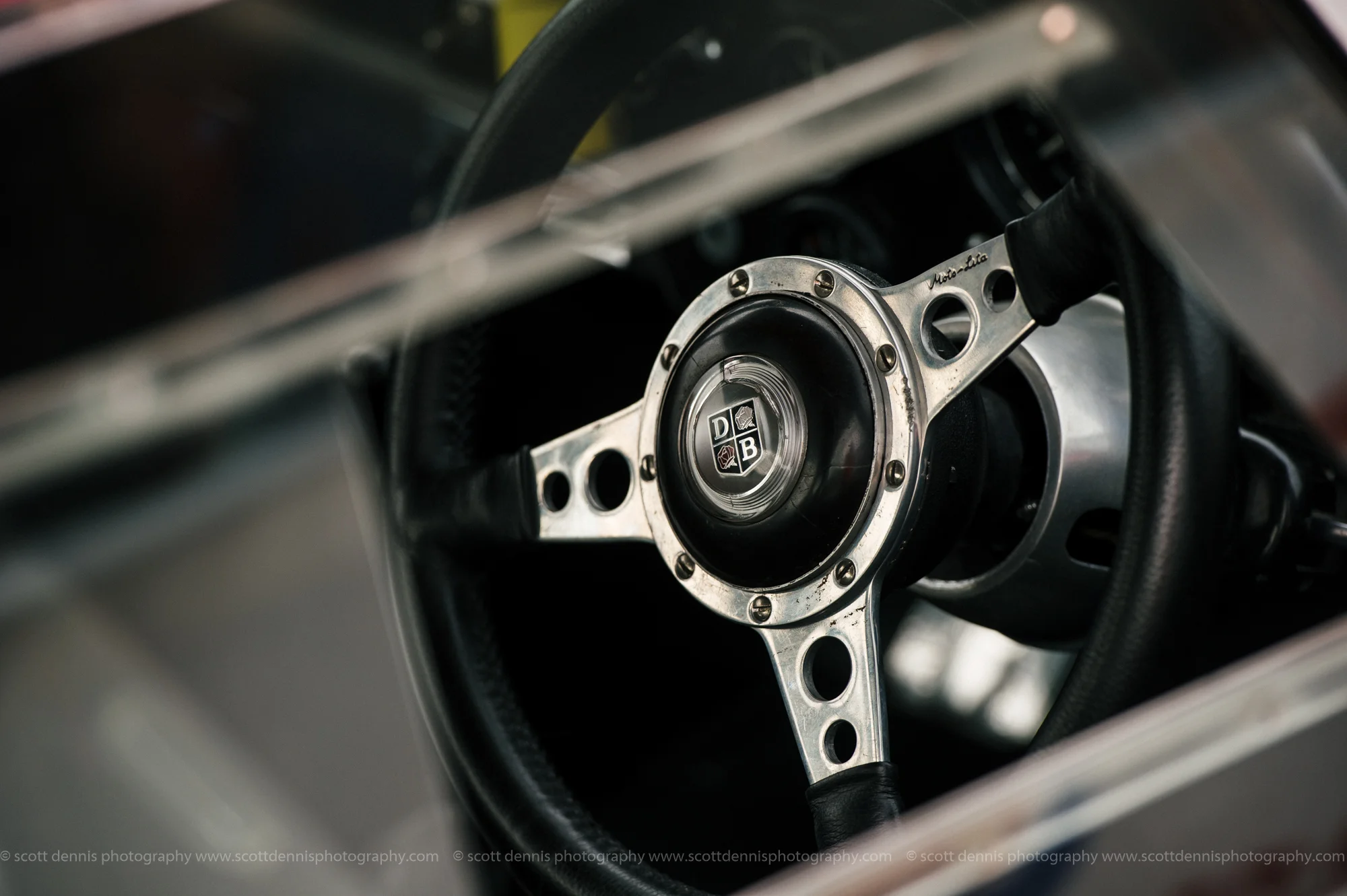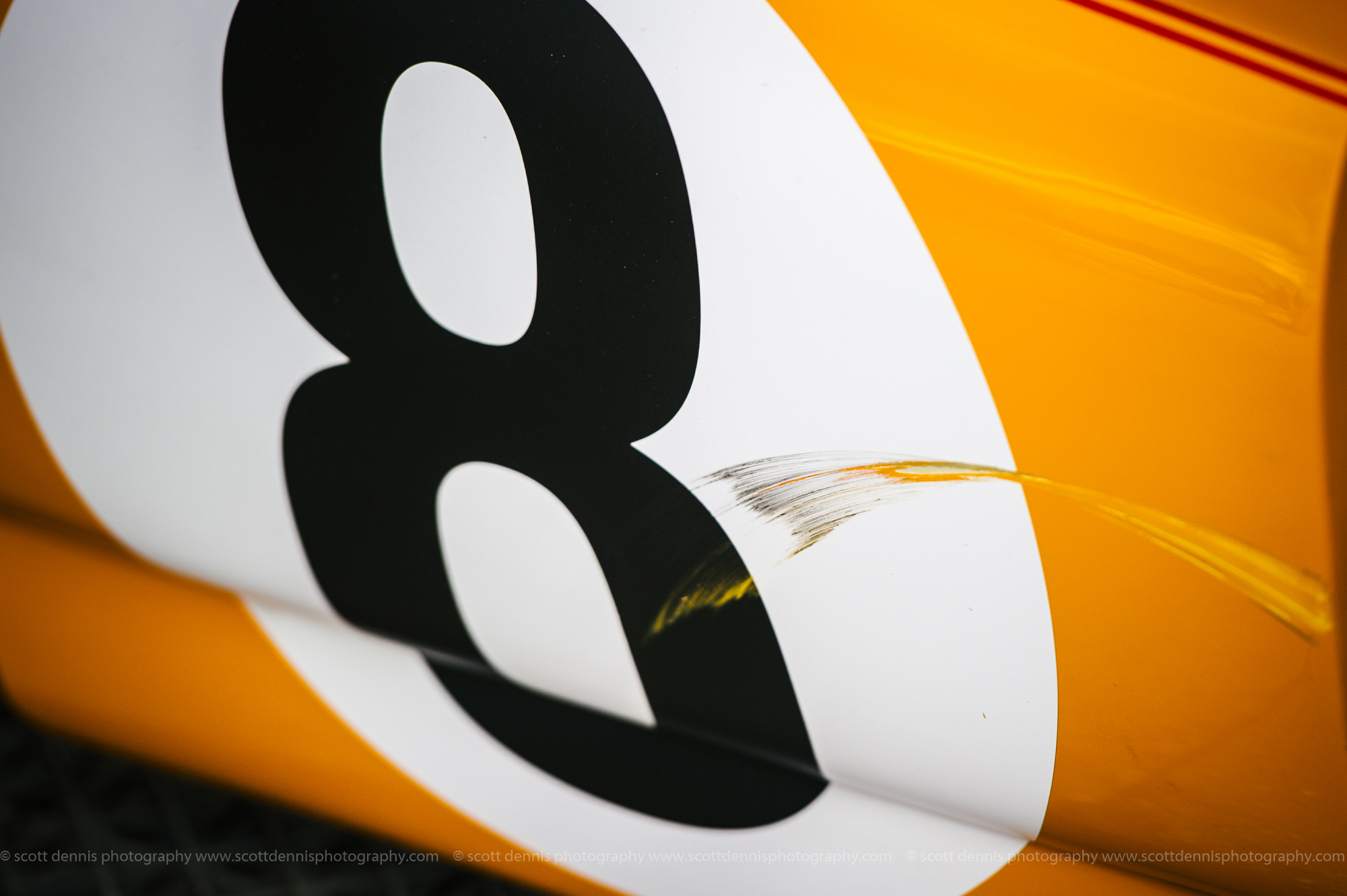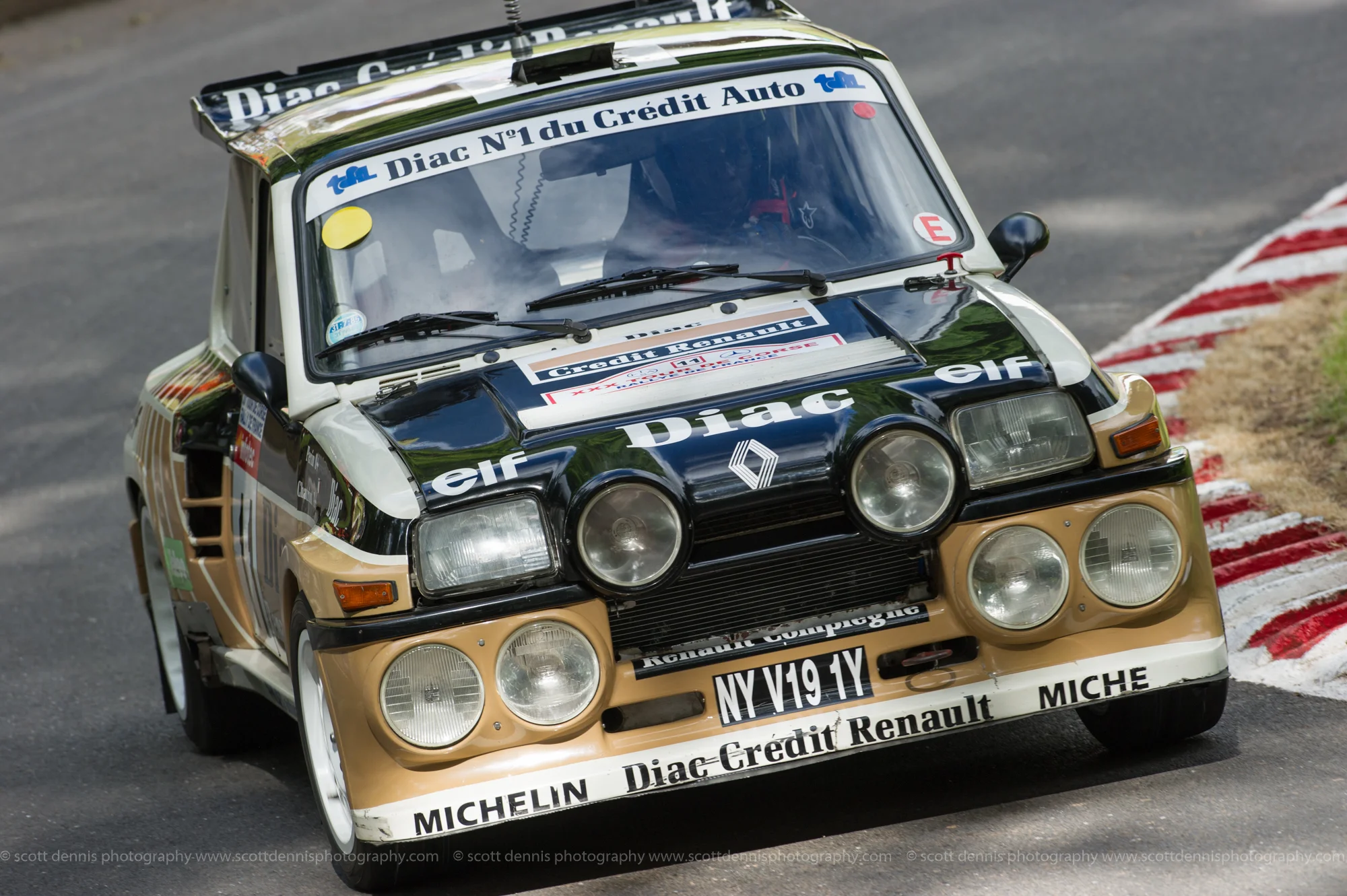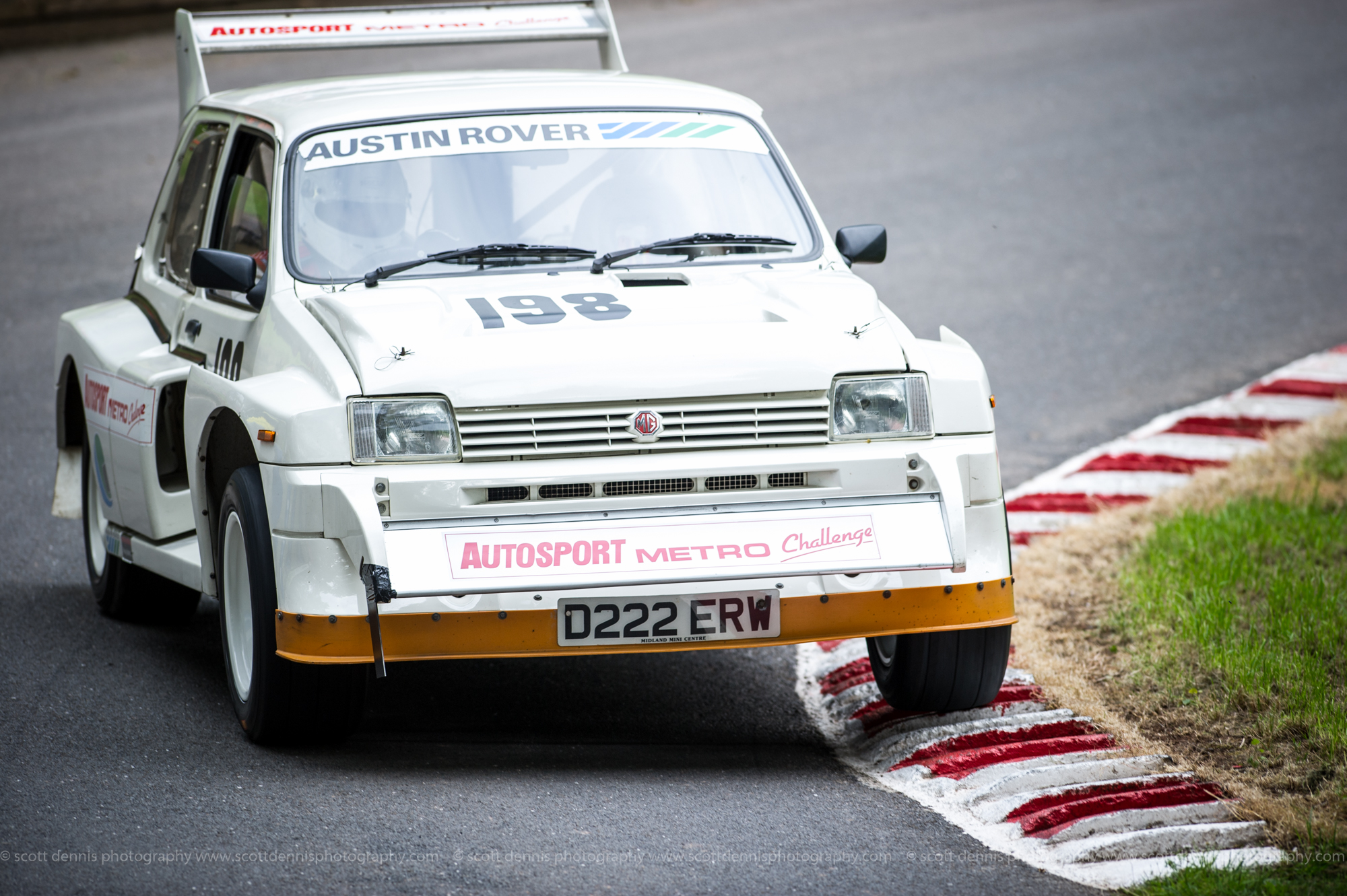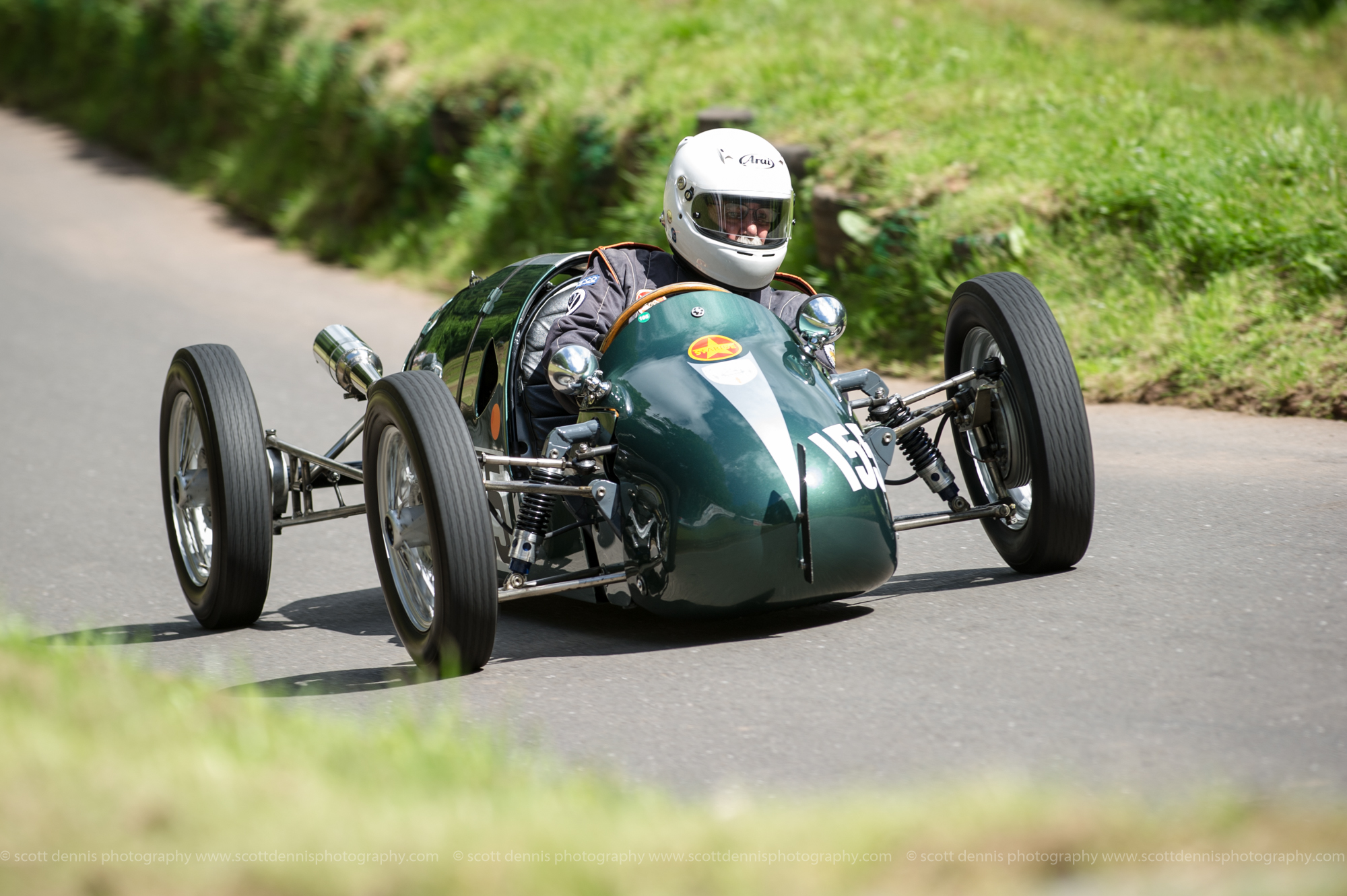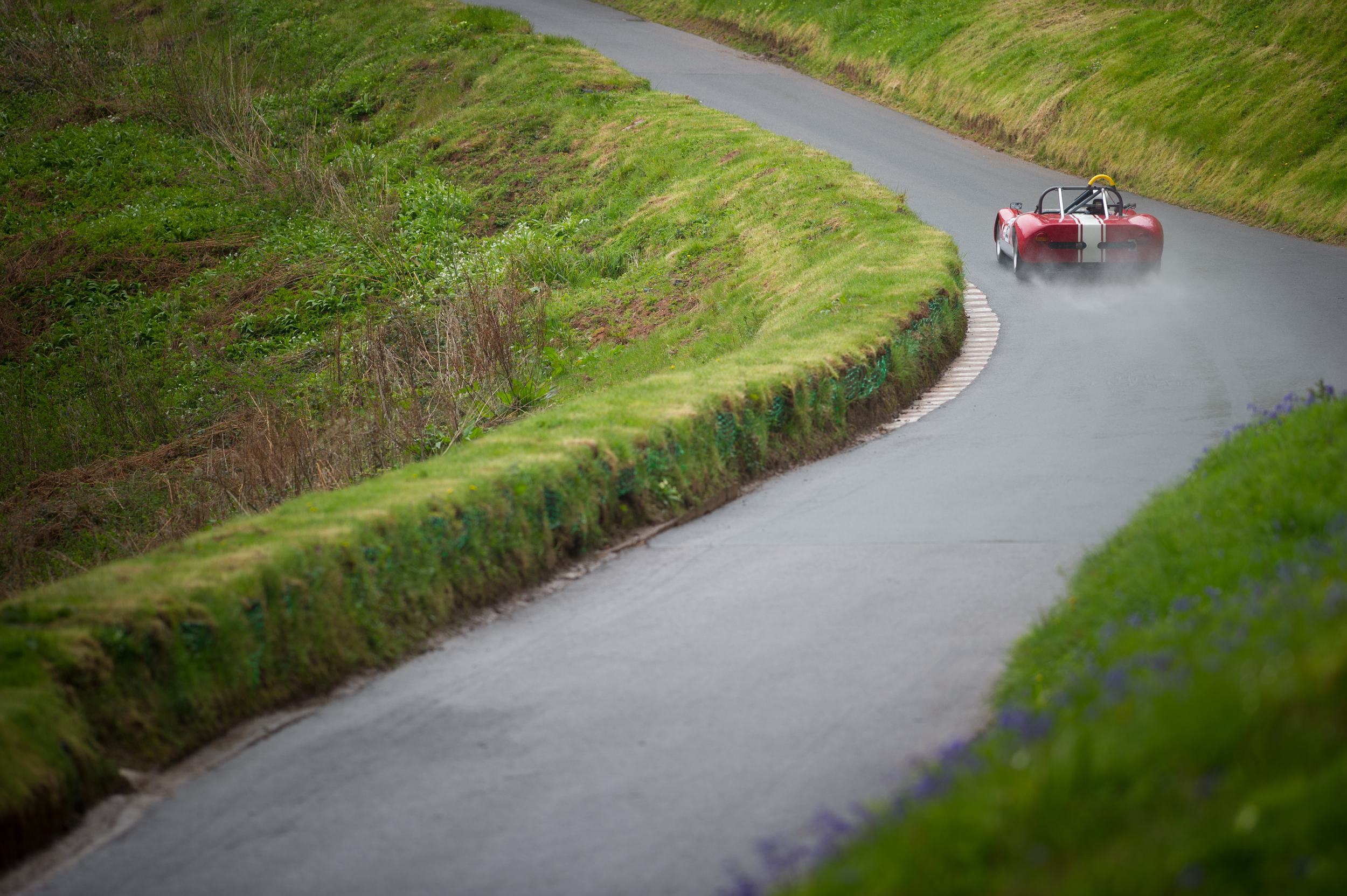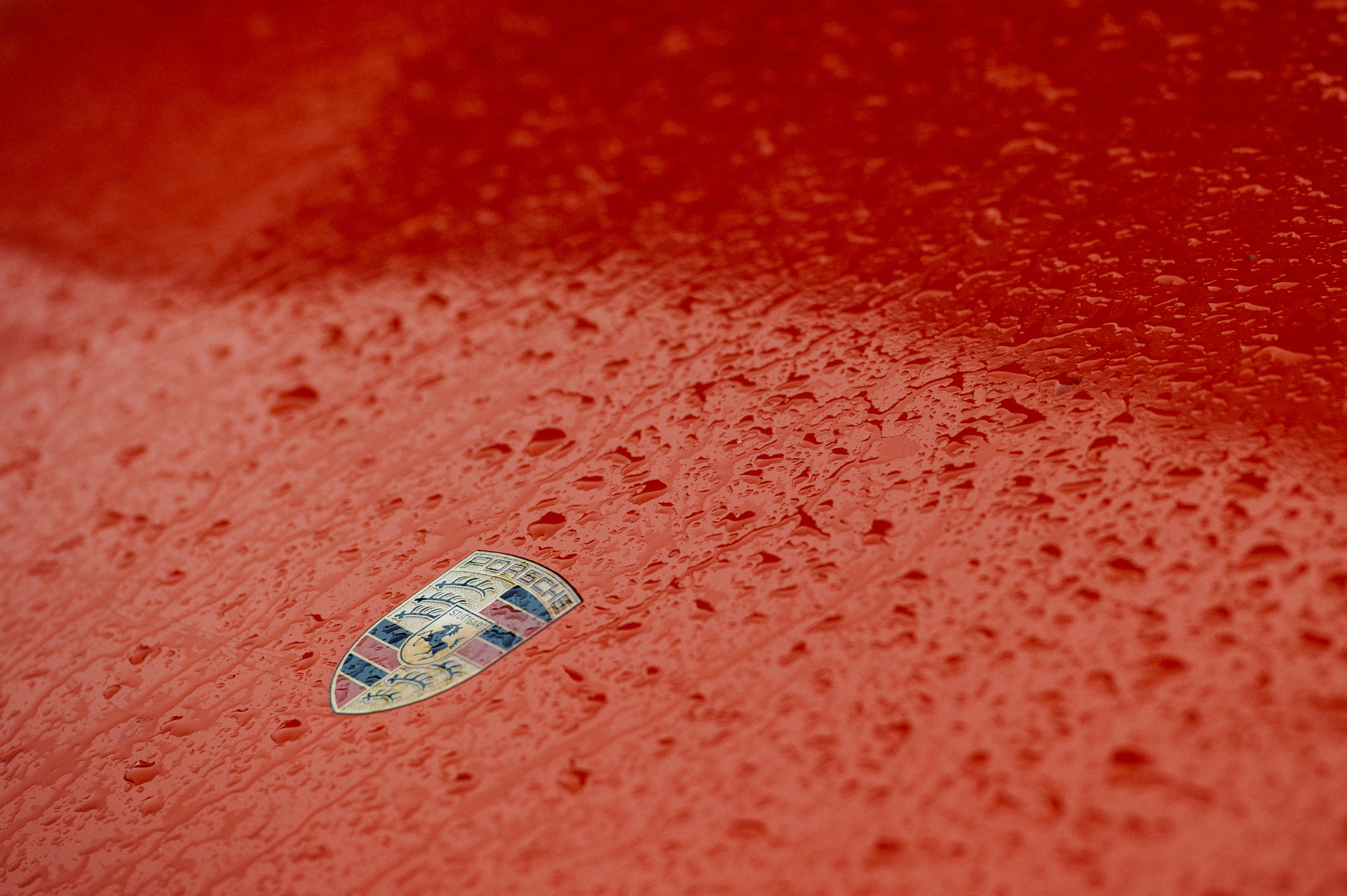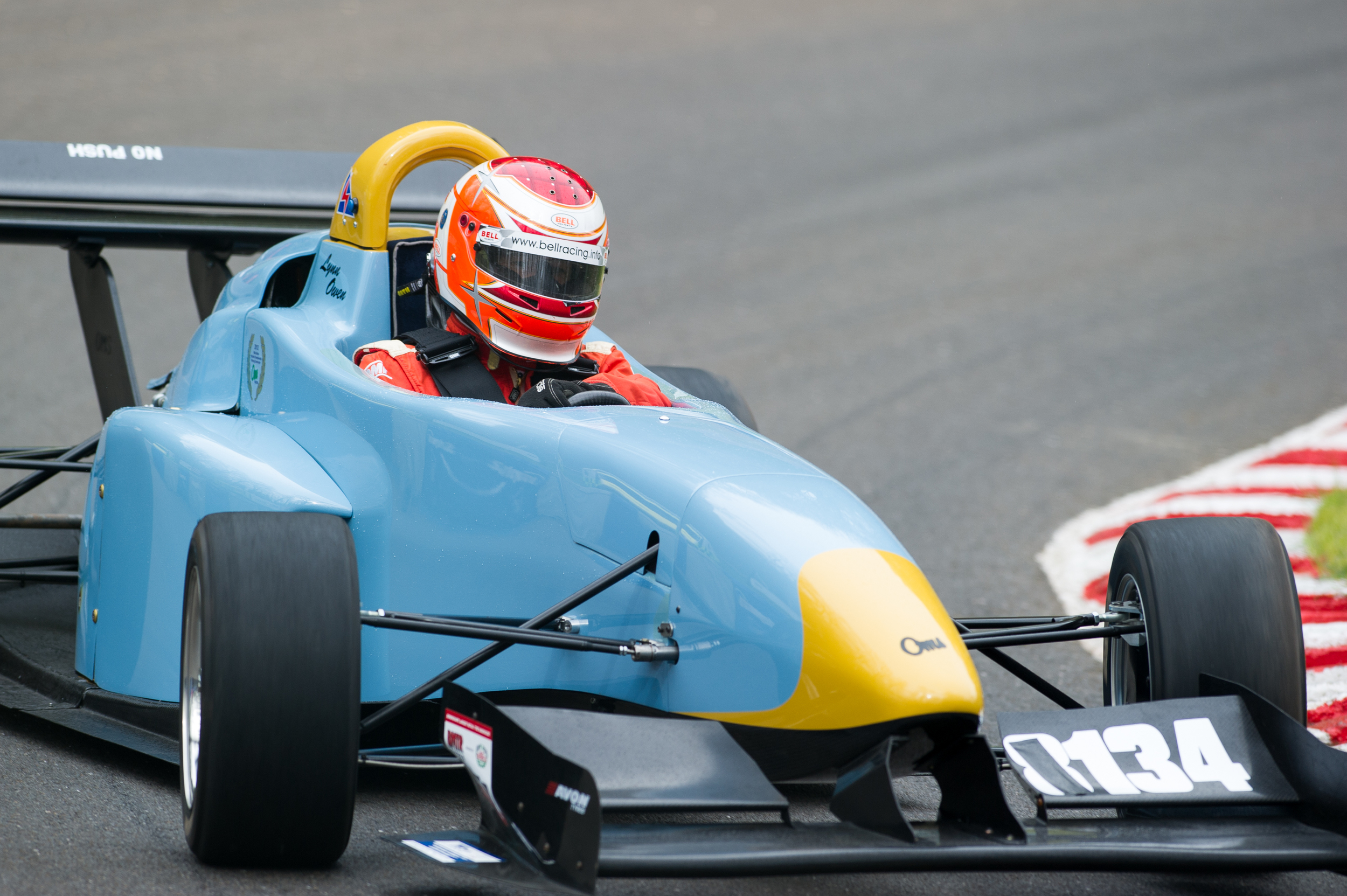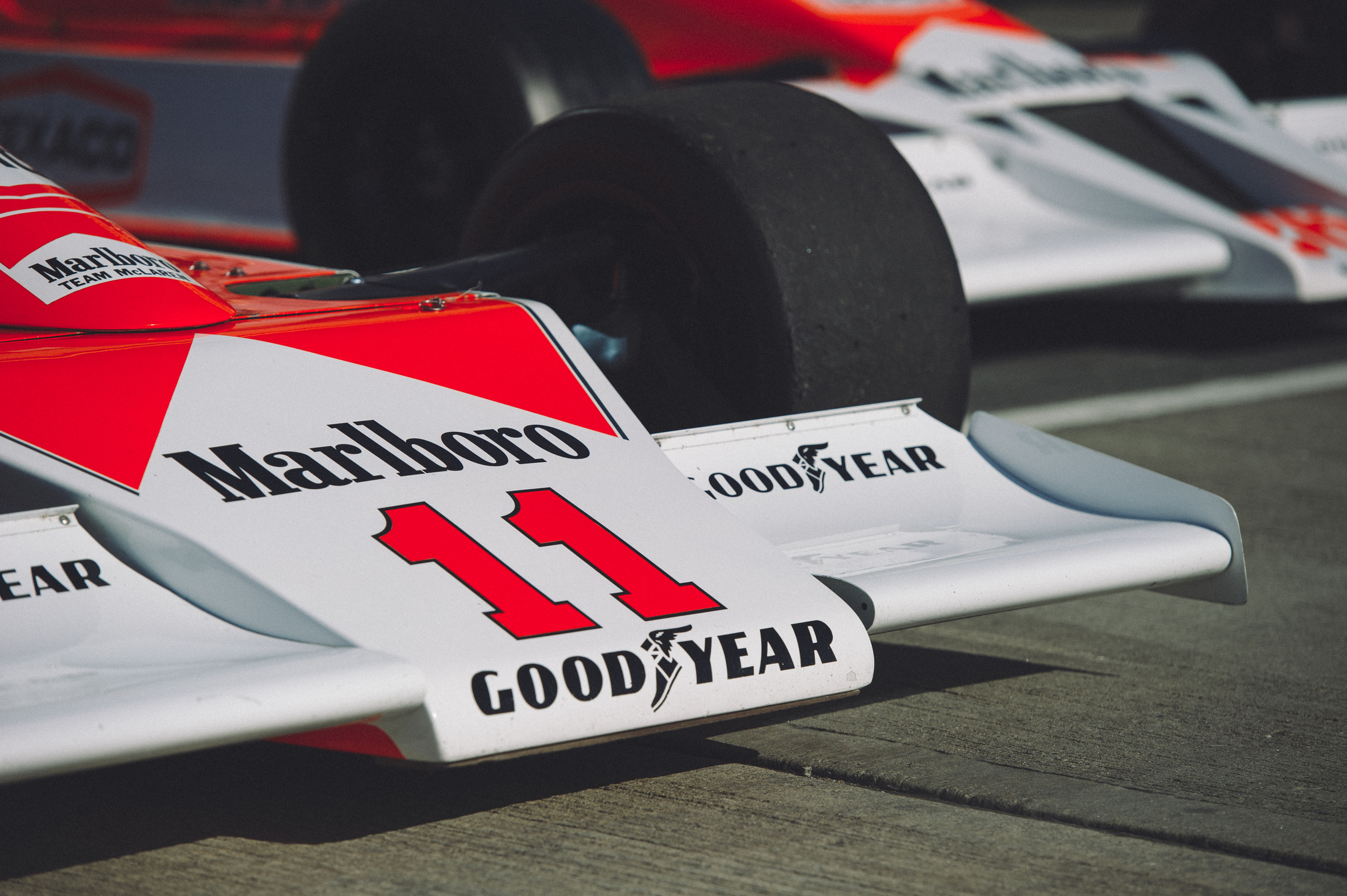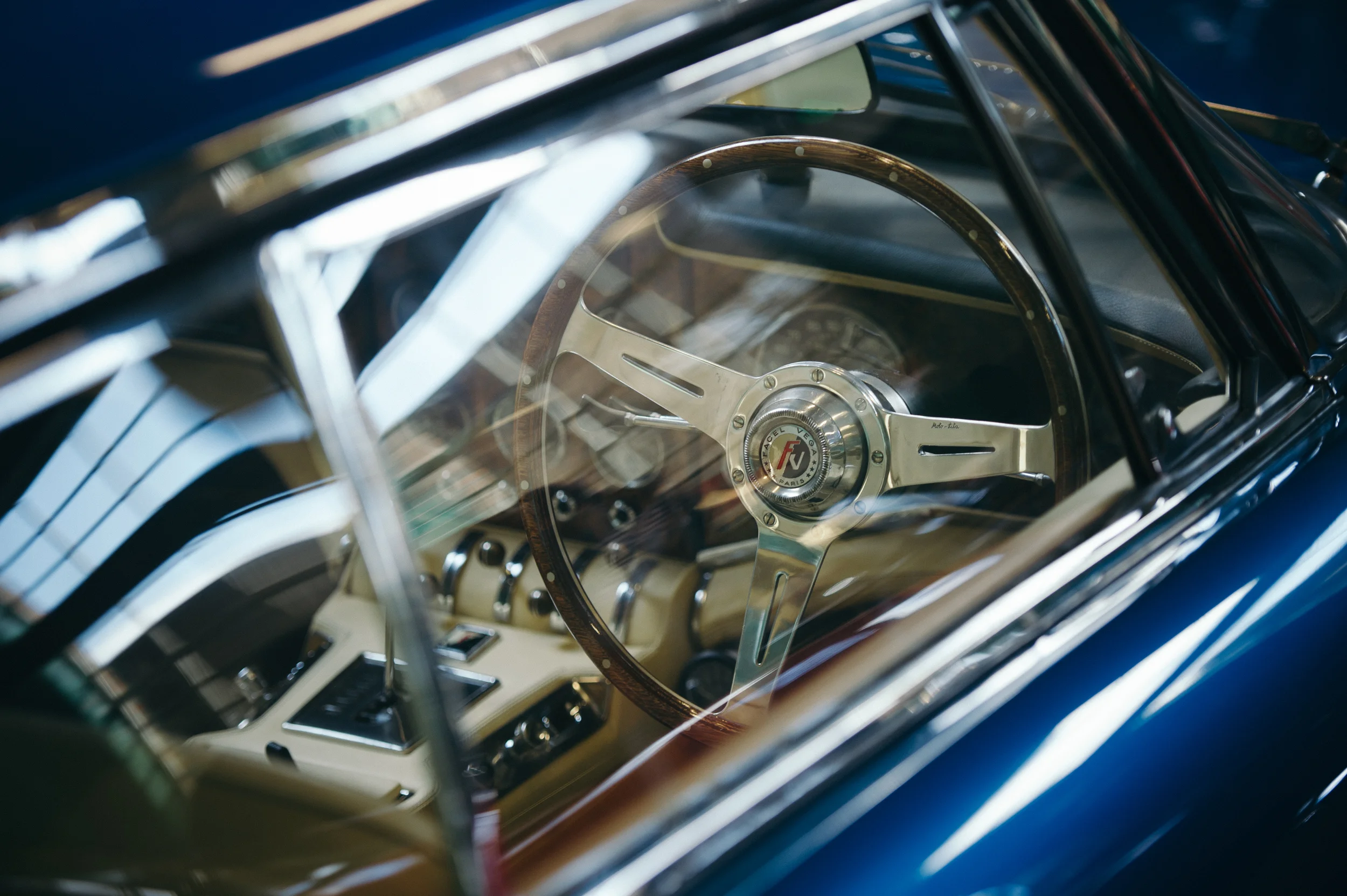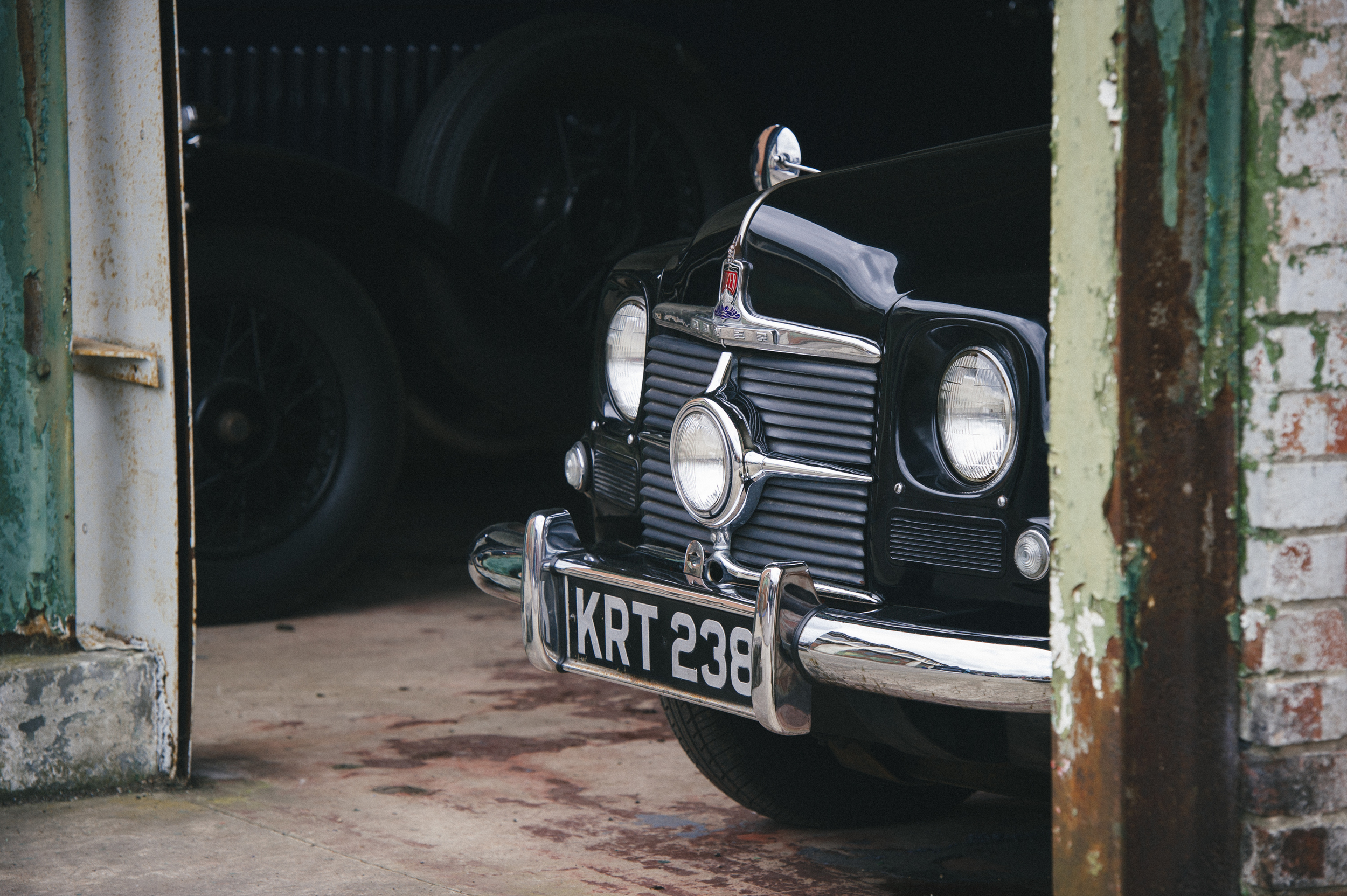A small selection of my favourite images captured for working for Audi UK over the last few years at the Goodwood Festival of Speed.... (click on a thumbnail for a larger view)
Ferraris at the Goodwood Revival.....
Always a dominant presence at the Goodwood Revival - a small selection of my favourite images of the magnificent machines over the last few years.... (click on a thumbnail for a larger view)
Ferrari 360 Challenge Stradale...
Ferrari 360 Challenge Stradale photographed for a private client.
To enquire about photographing your classic or 'supercar' please get in touch.
Click on a thumbnail image for a larger view...
Goodwood Revivial 2016 in pictures....
This year marked my third visit to the iconic classic motor sport festival that is The Goodwood Revival.
The 3-day event attracts some of the best, and costliest, historic racing motor cars and bikes in the world. They compete around the famous Goodwood Circuit in a series of different races.
Each year the Revival celebrates a historic event and this year it was the famous “They think it’s all over…” 1966 World Cup. The football theme was apparent at numerous times through the event and in keeping with the historical nature everyone attending is encouraged to dress in period costume which adds to the whole 'nostalgic feel' of the weekend.
Unfortunately my Revival experience this year was compromised by not being able to attend on the Friday. Saturday proved to be a complete washout in terms of the weather (not exclusively causing issues for me alone - obviously!).
However, notwithstanding the torrential rain on Saturday, I managed to get out and about on the Sunday in spite of most of my gear having suffered from ingesting too much water the day before!
A small selection of my favourites from what was clearly a challenging couple of days at the ‘wet & dry’ 2016 Revival…
(Click on any thumbnail for a larger view)
Classic Car Photographer - Classic Car Photography - Vintage Car Photographer - Automotive Photographer - All Images © Scott Dennis 2016
Silverstone Classic 2016 in pictures.....
Look at the Silverstone Classic website and you’ll be greeted by a banner that describes the 3 day event in July as - ”The world’s biggest motor racing festival”.
And it really is hard to argue with that claim - the first day this year saw a staggering 14 qualifying sessions take place with drivers from over 25 countries competing in more than 1,000 historic racing cars, from Grand Prix cars of the 1940’s, historic Formula 1 cars competing in the FIA Masters Historic Championship to Super Touring Cars from the glory days of British Touring Car Championship.
If that wasn’t enough of a field there were Group C prototypes, including the Leyton House liveried Porsche 962 (a favourite of mine), all gracing the Silverstone circuit along with cars from the Can-Am series celebrating the 50th anniversary of the first Can-Am race in North America.
When the circuit wasn’t filled with the sights and sounds of this incredible mix of historic cars ‘doing their thing’ racing, it played host to a number of parades to celebrate milestone anniversaries for manufacturers such as Porsche, Lotus and Lamborghini.
There is also much to see at the Silverstone Classic with over 10,000 privately-owned classic cars filling the infield representing owners clubs of all types.
However, the real action is most definitely on the track and it’s a real treat to see some of these cars racing as they were intended to be raced by their drivers, especially considering the impressive value of some of the cars competing.
Once the races are underway the competitive instincts take over and these ‘gentleman racers’ push their prized machinery to the limits. On occasion these limits are exceeded and cars spin and a little bit of ‘rubbing’ takes place, but thankfully these aren’t commonplace and in most cases the only thing hurt is pride.
I enjoyed what the Silverstone Classic had to offer for all three days this year – one day just isn’t enough! If you haven’t been, and I’m assuming if you’re reading this you have a small interest in historic racing – get yourself there next year!
Here’s a selection of my favourite images from my time there, I hope you enjoy looking at them as much as I did taking them… (a further gallery of larger images can be viewed here)
Click on a thumbnail for a larger view....
Silverstone Classic 2016
(All images © Scott Dennis Photography - no reproduction without prior consent)
'Innovation' - something to be embraced and enjoyed no matter when it happened...
We have a DAB radio in our kitchen and I was watching my wife changing the station she was listening to using the remote control. To her the remote control is a bit of a waste of time as she keeps it on top of the radio, and doesn’t really value the function in life that it was designed for as she uses it so close to the radio she could simply use the buttons on the radio.
This got me thinking about modern innovations (accepting that remote controls connected by wires were around in the late 1930’s as well as the first wireless remote control) that have been designed to make our lives easier, save us time, make life safer, enhance our experiences, but have the potential to make us lazier and take away some of our ‘experiential’ enjoyment. It also got me thinking that whilst these innovations have their place in today's world not everyone wants to, or feels the need to use them, after all shouldn't well designed innovations work just fine the way they were designed, whether it was last year, the year before, ten years ago, 50 years ago and even 100 years ago?
I have spent all of my life exposed to the motor car, in one way or another. From an early age enjoying travelling in the vast array of cars that my father had the pleasure of driving in his professional life, such as BMW 2002’s and a CSL now and then, an early Audi quattro and one of my favourites an Audi 200 Turbo. In fact it was in this last car that I first learnt to drive at the age of 12 at Silverstone Circuit.
I ‘fell’ into the motor industry at an early age and held various positions culminating in managing a very successful manufacturer racing team in the British Touring Car Championship.
Now as a photographer I have the pleasure of photographing cars of all types. From classic cars in private collections to motor sport events and new cars for motor manufacturers. I’m certainly no expert when it comes to the motor car, but I know a bit.
So, after musing about my wife’s preference for using the remote control the way she does I thought I’d have a trawl through my image library and look at how innovation has changed the motor car over the years and whether it’s for the better, worse or just necessary in the world we live in. By no means a scientific study of this subject, there are numerous resources available online written by far more knowledgeable people than me – this is simply an illustrated journal of my observations and thoughts.
The engine - the heart of any motor car – has been fitted to road going vehicles since the end of the 18th century, which back then would have been powered by steam. The 19th century saw the development of the four-stroke petrol engine (Nikolaus Otto), the two-stroke petrol engine (Dugald Clerk) and the four-stroke diesel engine (Rudolf Diesel) along with hydrogen fuel cell and lead-acid battery alternatives.
Thanks to these early engineers much has changed today in the world of the motor car with the introduction of hybrid technology utilising regenerative braking, dual power and automatic start/stop. The future of the modern motor car is without doubt dependant on hybrid technology and many automotive manufactures are making huge gains in this area. Away from hybrid technology development by others goes into production of small and highly efficient turbocharged engines that deliver the same performance as normally aspirated engines but with a big reduction in fuel consumption and exhaust emissions.
The innovation that surrounds the way the modern motor car is propelled will benefit the environment in the long term and make cars cheaper to run – that cannot be in doubt. However, without hesitation, my most exhilarating driving experience in the last 12 months was in the passenger seat of a 1926 3-4½ Litre ‘Le Mans’ Bentley - it certainly made me appreciate those early engineering pioneers and how their efforts have influenced modern motoring as we know it.
The first motor cars were steered with a ‘tiller’ before the somewhat radical introduction of steering wheels on cars at the end on the 19th century. Long before the invention of the ECU (Electronic Control Unit) to automatically control how the engine performs the strength of air and fuel mixture along with ignition spark advance were set by the driver using a series of levers mounted in the centre of the steering wheel. Look at many of today’s steering wheels and you’ll see an array of buttons to control the radio, the telephone, the satellite navigation and even the note the exhaust sound makes.
Appreciating the safety benefits of these innovations I can’t help thinking that aesthetically they’re just not as visually pleasing as their predecessors. And whilst they are technological masterpieces in many cases, they just don’t 'feel' same!
Climb into the cockpit of some modern cars, turn the key in the ignition and the dashboard will light up akin to a scene from the flight-deck of the ‘Starship Enterprise’. No more needles gradually coming to life to show fuel level and engine temperature, or spinning round to show engine revs and speed – all of this is accomplished through the use of electronic displays. The driver has everything they need to know about the cars performance and settings right in their eye-line – even in some cases satellite navigation. HUD (Heads-Up Display) continues to evolve and within 5 years some are predicting that active glass will be capable of displaying hi-definition colour images. I still think a pair of imperious needles takes some beating!
The levels of comfort you can experience in the modern motor car are, in some cases, quite extraordinary. In most cases there is a button (or two) to control almost everything, including your seat position in 3 or even 4 directions, as well as warming your bum on those cold winter mornings and even give you a massage! And there is almost an endless choice of colours to finish the interior that can be chosen for your fine Nappa leather or Alcantara as well as inlays including walnut, aluminium and carbon to name but a few. I guess a lot hasn’t changed that much in this respect – levers, rocker switches and handles have simply been replaced by their electronic brothers.
Changing gear has evolved and yet it has also reverted for some manufacturers to being indirectly back on the steering column, reminiscent of the column shift levers fitted to early cars with paddle shift technology. Whether by way of a manually selected gear using a foot pedal clutch and the familiar H format gear lever or an automatic gearbox with motion selection determined by pre-selection the variety of location spins-off into other benefits. Automatic-transmission vehicles with knobs, push buttons or small levers, free up precious space in vehicle cabins for extra storage bins, smartphone cradles, bigger cupholders or multimedia controllers. The new, lightweight controls do the job because automotive engineers are increasingly getting rid of the nuts, bolts and cables that once were connected to the gear box and instead are designing transmissions that use electronic circuits, switches and relays to control the actual gear changes alongside the infamous ‘cruise control’.
The earliest headlamps were introduced on the motor car in the late 1880s and were powered by oil or acetylene, the latter being popular because of its ability to resist rain and wind. Electric headlamps were introduced some 18 years later but the filaments had a short life and it was difficult to produce small dynamos with a high enough power output.
Almost 50 years ago the Citroen DS championed directional lighting, meaning that two of the four headlamps turned in the direction of the steering wheel – a concept now developed and refined and widely seen in the modern car. The 1960’s also saw the introduction of the halogen headlamp and subsequently the first standard LED headlamps were introduced by Audi – based on the technology developed and used in their DRLs (daytime running lights). Today’s headlamps are digitally controlled and laser headlight technology features on some high-end cars. There is no doubt that the latest headlamp technology improves safety – now, talking safety, if only car designers could find a way of allowing the use of rear ‘high intensity’ fog-lights simply when they’re needed!
Many car manufacturers use the world of motor sport to test technology and translate it to their road going cars. Creating aerodynamically efficient designs bursting with the engineering that has been developed through hours of wind tunnel and ‘on-track’ testing in highly demanding conditions. One such example is the Audi 100 (C3) designed, over 30 years ago, to have an aerodynamic look, achieving a drag coefficient of just 0.30cd. Audi also innovated flush windows - a key area for aerodynamic drag - that has now been adopted by virtually all manufacturers. This breakthrough alone has helped manufacturers create increased aerodynamic efficiency resulting in better fuel economy.
Modern motorsport features many ‘driver-aids’ not only to increase safety but improve performance too. You have to admire those early pioneering racing drivers without whom the development of both performance and safety would not have evolved and progressed as it has to our benefit.
Innovation is a wonderful thing and I am a big fan. These images were created using digital cameras, this article was written on a computer with a touch-screen and my high-speed Internet connection enabled it to be on the World Wide Web within seconds of clicking a button using the stylus pen on my Wacom tablet.
Some find it difficult to embrace innovation and prefer things ‘the way they were’ (nostalgia can be wonderful - taking people back to a time or place that made them feel happy), some can appreciate both and some just prefer ‘the modern way’. I fall into the second group but am increasingly becoming aware of the history of design, especially where the motor car is concerned. Admiring those pioneering designers and inventors without whom we wouldn’t be in a position to enjoy the ‘easier’ and more ‘immediate’ life we have today. Long live the designers, inventors and innovators!
And the next time Mrs Dennis walks over to the radio in the kitchen and points the remote control at it from only a couple of inches away I’ll smile and wonder if the marketing people at Philco (they introduced the ‘Mystery Control’ radio remote control in the late 1930’s) would be raising their eyebrows and smiling wryly along with me, after all, innovation has been happening for years and not everyone needs what innovation delivers…
…Each to their own - and long live that!
(All images © Scott Dennis - no reproduction without prior consent)
Shelsley Walsh - Classic Nostalgia....
This year is the 111th anniversary year of Shelsley Walsh, the oldest motorsport venue still in operation in the world, and it has been marked with a return visit by a very special car and driver during the Classic Nostalgia event last weekend.
Back in 1936 Hans Stuck piloted a V16 Auto Union Grand Prix car up the hill at Shelsley Walsh and 80 years later his son Hans-Joachim Stuck delighted the crowds, and bought a tear to many an eye, by retracing his father's 'tyre-marks' in an Auto Union Grand Prix car brought over to the UK by Audi Tradition. For the final run that Hans-Joachim did up the hill on the Sunday afternoon he was given permission to drive the car wearing his father's leather 'skull-cap', goggles and gloves that he had worn back in 1936. Hans-Joachim also gave an Audi IMSA S4 GTO, which only arrived in the UK 6 weeks ago, its debut on UK soil by powering this 720bhp beast up the hill during several demonstration runs.
Another highlight of the weekend was the gathering of some 30 Group B rally cars from the 80's with Jimmy McRae reunited with his Metro 6R4 and Russell Brookes driving his Opel Ascona.
A full report from a wonderful weekend at a very special motorsport venue can be read here on the Shelsley Walsh website.
The event was superbly organised as usual and the atmosphere really was very special. Due to previously booked commission I couldn't attend for the full two-days of the event - but other commitments allowing - I'll be there for the full weekend next year eagerly looking forward to seeing how the team at the Midland Automobile Club top this past weekend!
A few from my time there.... (a full gallery of images can be viewed here)
Click on a thumbnail for a larger view....
Shlelsley Walsh Classic Nostalgia 2016 Images
(All images © Scott Dennis Photography - no reproduction without prior consent)
Shelsley Walsh....
They've been holding motorsport events at Shelsley Walsh for a while - the first in 1905 - it's got a bit of history!
I went for the first time last year, liked it and decided to go back again this year at some point. A meeting at the Silverstone Classic media day whet my appetite for a return sooner than I thought. And despite the fact that my head hit the pillow at 2.30am (after a corporate job in London - not on the lash!) the night before I headed back to Shelsly Walsh yesterday for the Speed Into Spring event for a couple of hours.
I like it there - photographically it's a challenge - which I like! The previous time I was there was for the Classic Nostalgia event back in July last year which provided more image opportunites in the paddock, but this time I focused on the activity on the hill to learn a little more about 'the hill'!
Apart from the almost constant 'drizzle' I thoroughly enjoyed being there and catching up with a couple of photographer friends I'd met previously.
A few from the day below (click a thumbnail for a larger view) and more can be viewed here
(For print and/or digital file purchases please get in touch. All images © Scott Dennis)
All images © Scott Dennis - Professional Automotive Photographer
Freddie Hunt.... (Silverstone Classic Media Day 2016)
One of my favourite events to photograph is the Silverstone Classic, I missed it last year but hope to attend this year. Last week I popped along to the Media Day to find out a little more about this year's event.
One of the 'headlines' for this year is a tribute to James Hunt as it's 40 years since he won the Formula One World Championship in 1976. During the Media Day his son Freddie Hunt was on hand carrying out a variety of pre-arranged media duties including an interview with the legend that is Murray Walker and driving one of his father's title winning McLaren M23s.
A few images of Freddie and the car during his media duties below.... (click on a thumbnail for a larger view)
More images from the day can be viewed here
All images © Scott Dennis - Classic Car Photographer
Bicester Heritage – 8th Sunday Scramble…
My first visit to Bicester Heritage for their 8th Sunday Scramble last Sunday. Not knowing what to expect I was blown away by the eclectic mix of cars and characters that greeted me – definitely in the diary for a return visit in the future.
A small selection of ‘snaps’ from my short time there….
All images © Scott Dennis - Classic Car Photographer
































































































